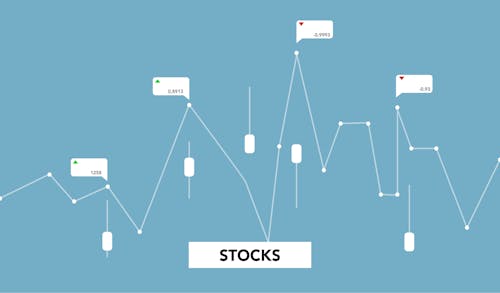US Recession: 3 Stocks That Perform Well When The Economy Doesn’t

Image Source: Pexels
On Friday, the Bureau of Labor Statistics reported underwhelming figures for July’s nonfarm payrolls. Against the expected unemployment rate of 4.1%, the rate increased to 4.3%, down from June’s 206,000 to 185,000 job gains.
Combined with the previously reported real average weekly earnings in July, which have only increased by 0.8% annually, this is another signal for a recession as inflation keeps outpacing earnings. After all, with less money to spend, not only does this negatively affect businesses’ bottom lines, but it also increases loan delinquencies.
In Q1, consumer spending has already slowed down from the estimated 2% to 1.5%, while consumption spending, as a contribution to GDP, decreased from the previously downwardly revised 1.3% to 0.9%.
Lastly, Sahm Rule, the heuristic macroeconomic indicator based on unemployment rate variance, crossed the threshold with the latest job numbers. This has historically pointed to recession. Although the Federal Reserve seems to be anticipating this scenario with a possible interest rate cut as early as September, there are certain investing strategies shareholders should consider.
CFRA Research shows an average decline of 8.8% for the S&P 500 over the last four recessions since 1990. Based on their business model and offerings, these stocks should perform well during a recession.
Costco Wholesale Corporation (COST)
This membership-based retail chain seems perfectly suited to weather recessions. Not only does the membership erect an exclusion zone against rampant shoplifting, but Costco also benefits from decreased discretionary spending. That’s because buying essentials in bulk is prioritized, which is exactly what Costco specializes in.
In the end, the savings from such a shopping model offset the membership cost. At the same time, the bulk nature of shopping, membership and Costco’s warehouse layout all act in unison to curtail shoplifting, effectively putting the company ahead in the loss prevention game.
Ending May 12th earnings, Costco reported continued growth, with the company’s sales having increased by 5.4% while the e-commerce division increased by 14.7% for 36 weeks adjusted. In other words, the company beat earnings per share for four consecutive quarters. Despite signs of already waning consumption, Costco’s net income increased from $1.3 billion in the year-ago quarter to $1.68 billion.
At $813.16 per share, COST stock is well above its 52-week average of $687.92. Year-to-date, COST shares are up 25%, forecasted at an average price target of $910.05 according to Nasdaq’s aggregated analyst data.
Microstrategy (MSTR)
As it becomes more obvious that recession cycles are primarily driven by central banks’ monetary tampering, hard counters to such tampering gain prominence. One such counter is Bitcoin. Unlike gold, Bitcoin has final scarcity while also being digital. And although it is digital, Bitcoin is anchored to the real world with its proof-of-work algorithm that secures the decentralized blockchain network.
Based on this macroeconomic bet, Michael Saylor’s Microstrategy company leverages debt to accumulate as much Bitcoin as possible. One that counts on continued currency devaluation coupled with out-of-control government spending. Most recently, Microstrategy acquired 12,222 BTC worth $805 million in Q2, elevating its total Bitcoin holdings to 226,500 BTC.
Based on current BTC price, such Bitcoin stash is valued at around $14.7 billion. VanEck CEO Jan Van Eck forecasted during “The Claman Countdown” on Thursday that Bitcoin could easily reach $350,000 within years, or $2.9 million by 2050.
Year-to-date, MSTR stock outperformed BTC itself at 113% vs 40% respectively. Although Bitcoin could be seen as a risk-off asset during recession, fewer selling pressures and greater institutionalization via Bitcoin ETFs introduced a new dynamic which should not be underestimated.
Colgate-Palmolive (CL)
With over 20 brands spread across oral, personal, pet, and home care essentials, Colgate-Palmolive is a consumer staple known for its recession resistance. When budgeting restructuring occurs during recession, such necessities continue to churn out revenue.
On July 26th, the company delivered its Q2 2024 earnings, showing a 4.9% increase in net sales. Colgate-Palmolive’s net income increased from $502 million to $731 million from the previous year. Having beaten another earnings per share estimate at 4.6% surprise, CL stock gained 25% value year-to-date.
Presently priced at $100.91, CL shares are close to their 52-week high of $101.42 and 20% above their 52-week average price of $83.70 per share. According to Nasdaq data, CL is expected to reach $106.39 twelve months ahead as the average price target. The less optimistic outlook of $95 is not that far from the current price, while the ceiling for CL stock is $115 per share.
More By This Author:
Exxon Mobil Reports Q2: Beats Forecast With $2.14 EPS, $93.06 B In RevenueIntel Faces Legal Probe Amid Processor Issues, Stock Dips
Stocks To Watch Today: MRNA, META, And AMAT
Disclaimer: The author does not hold or have a position in any securities discussed in the article.
Disclosure: None.



